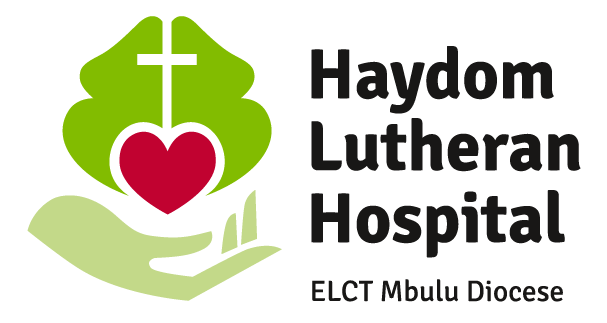About Us
About Us
Haydom Lutheran Hospital (HLH) is the regional referral hospital owned by the Evangelical Lutheran Church of Tanzania, Mbulu Diocese. HLH was officially opened in 1955 with a 50-bed capacity. It is in a remote rural area of Northern Tanzania, about 120 km from Manyara capital city (Babati) which is the nearest urban center. While it is 300km from Arusha town which has super specialized services, HLH is situated in the South-West corner of the Mbulu District, which is part of the Manyara region. HLH became part of the Tanzanian central health plan in 1967 and became a referral hospital at the regional level in 2010. Today, HLH has a total of 420 beds. Haydom Lutheran Hospital stands on three main pillars which are clinical services, research, and training. .
1.1.1Clinical services
HLH started as a dispensary with gradual growth attaining regional referral status in 2010. The range of services has expanded over time and currently, the hospital offers all major disciplines of clinical medicine (namely, internal medicine, paediatrics, obstetrics and gynaecology, general surgery, orthopaedics, urology, dental and eye services) with diagnostic services (imaging and laboratory). The hospital has extensive reproductive and child health services (RCHS) both at the hospital and through satellite clinics (outreach clinics). There are 20 satellite clinics (outreach clinics), most of them are accessible by car and some by aircraft. Furthermore, the hospital has established renal dialysis services serving between 15 and 25 patients per week. .
1.1.2 Research
Haydom Lutheran Hospital owns a well-established functional research centre known as Haydom Global Health Research Centre. The research centre was formally established in 2009, partaking in national and internationally known research projects. The research centre is recognized by the National Institute for Medical Research (NIMR) and the Commission for Science and Technology (COSTECH) and partakes in several major research programs in the fields of mother and child health, infectious diseases (e.g., tuberculosis), and nutritional research. This research facility has close linkages to several Norwegian, American, and other international universities as well as to Laerdal Global Health, Laerdal Foundation, and SAFER (Norway). To know the current Research projects at our site please visit our research section of our website .Please Click here.
1.1.3 Training
The hospital encompasses the Haydom Institute of Health Sciences (HIHS), which educates nurses, clinical medicine, pharmacists, and laboratory technicians. The Haydom Institute of Health and Allied Sciences has full accreditation from the National Council for Technical Education (NACTE). The HIHS started in 1984 as Haydom School of Nursing offering Certificate in Nursing, has grown over years, today is known as HIHS offering certificate and Diploma in the disciplines. Today the institute has over 700 students in all courses. In addition to HIHS, the hospital is a hub for national and international trainees. HLH has more than 70 internists (graduates from different universities) in medicine, nursing, pharmacy, and laboratory. Furthermore, around 70-90 international students are doing elective studies annually. Besides that, some institutions organize trainings in Haydom, like the annual tropical medicine course of the University of Oslo in collaboration with the University of Bergen which brings more than 40 participants from Europe.
1.2 HLH Governance and Leadership
HLH is governed by the hospital Board with at least 11 members (multidiscipline). The Hospital Board oversees the performance of the hospital management which is led by the Executive director who is also a secretary of the hospital Board. There are six directorates under the Executive Director namely: Director of Clinical Services, Director of Nursing services, Director of Research and Training, Director of Administration and Human Resources, Director of Finance, and Director of Business Development and Planning
1.3 Partnerships and Collaboration
Haydom Lutheran Hospital was initiated by Norwegian Lutheran Missionaries in 1955, later handled to ELCT Mbulu Diocese. Since then, the HLH has been in strong collaboration with the Norwegian government through the Norwegian Embassy in Tanzania. The Norwegian government has been supporting HLH's largely running budget. The Norwegian Church Aid (NCA) came in to support HLH after being requested by RNE-Norad. NCA came in as a grant manager, to support HLH to realize financial sustainability. Since then, NCA has largely supported HLH to strengthen governance and leadership. Other HLH partners include Friends of Haydom in Norway, Germany, and The Netherlands. The hospital is collaborating with Laerdal Foundation (Norway), The Stavanger University and Stavanger University Hospital (Norway, The University of Bergen, the University of Oslo, and the Solander Hospital. Through research, the hospital is collaborating with NHI, The University of Virginia, The John Hopkins University (USA), the University of Toronto (Canada), and the Bill and Melinda Gates Foundation (USA)
